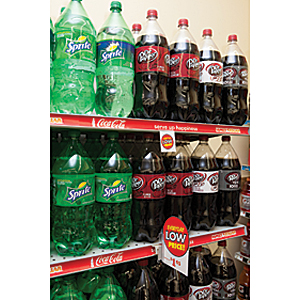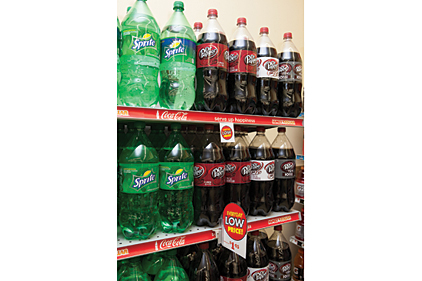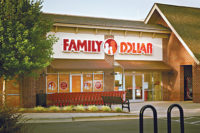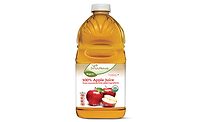Although discount retailers offer a wide variety of products for one-stop shopping at an affordable price, it’s their consumables selections that having been

|
boosting sales, albeit indirectly. Grocery-related consumables tend to be low-margin products, but, because they often need to be replaced on a weekly basis, these products keep consumers coming back regularly, explains David McGoldrick, U.S. analyst at Euromonitor International, Chicago. Plus, while shoppers are in the store, they might also purchase higher-margin items, he says.
For example, back in 2012, Family Dollar and Dollar General stores began offering cigarettes and liquor in select stores, notes Ali Lipson, senior retail and apparel analyst at Chicago-based Mintel. “Offering these items may encourage more sales as well as capture new shoppers who are specifically seeking these items and may benefit from the low prices,” she says. According to research by these discount retailers, shoppers in these channels are more likely to smoke cigarettes than the population at large, Euromonitor’s McGoldrick says. Offering cigarettes can bring more of these shoppers to the stores or bring them into the store more often, he says.
The same idea applies to the channel’s grocery offerings, but they’ve also held their own in terms of growth. “At these stores, their grocery products have been growing a little bit faster than their non-grocery products,” Euromonitor’s McGoldrick explains. In the past year, average spending in the dollar channel increased
5.9 percent, compared with total consumer packaged goods average spending declines of 1.6 percent and average spending declines of 2 percent in the grocery channel, adds Susan Viamari, editor of Times and Trends at Chicago-based Information Resources Inc. (IRI). Specifically for beverages, sales in the discount retail channel grew 8 percent in the past year, compared with the 5.9 percent industry average, she says. Carbonated soft drinks, milk, shelf-stable juices, coffee and bottled water tend to be the most purchased beverages in this channel, she adds.
However, some consumer perceptions of the grocery products in these stores limit this growth, Mintel’s Lipson notes. “There is still a stigma among many consumers that the brands and products offered at dollar stores are of lesser quality than those of other retailers,” she says.
Consumers who do shop the channel, however, will notice that dollar stores do stock larger brand names, points out Virginia Lee, senior U.S. analyst at Euromonitor. “In the past, big brands … were reluctant to have their products sold at dollar stores because of a poor image,” she says. However, this channel’s positive performance has changed their minds, she says. To fit their products into the discount channel’s price range, some brands offer smaller package sizes, she explains. Consumers are attracted to these brand names because they offer an image of quality, she adds.
Overall, consumables make up approximately 63 percent of dollar and variety channel sales, which reached nearly $60 billion in 2013, according to Santa Monica, Calif.-based IBISWorld’s September 2013 report, “Dollar & Variety Stores in the US.”
In April, Family Dollar announced that it will expand its consumables selection with more than 400 new food items.
To highlight its consumables selection, Dollar General offers Dollar General Market stores, which typically are more than double the size of a regular store and offer an assortment of grocery items including dairy products, fresh produce, fresh meats and perishable foods. These stores also have reported sales three times higher than their traditional counterparts, Euromonitor’s McGoldrick adds.
While McGoldrick projects mid-single-digit growth for the channel in the next five years, IBISWorld’s report notes that, as the economy improves, some of the channel’s higher-income shoppers might switch to other shopping channels as they revert to their pre-recession ways. To stay competitive, dollar channels should highlight their big-brand offerings to show the quality of their products and continue to find ways to further differentiate themselves in the crowded marketplace, Mintel’s Lipson says.
Targeting the discount channel shopper
Although the price point of many items in the discount retail channel can be attractive to lower-income consumers, middle- and upper-class consumers also have turned to the channel for value in the current economic climate, says Virginia Lee, senior U.S. analyst at Euromonitor International, Chicago. Lower-income shoppers make up the bulk of the chain’s consumer market, but higher-income consumers also shop the channel to pick up seasonal items and party supplies, she says.
Plus, during the recession, higher-income consumers began to accept dollar stores as an alternative to pricier channels, according to Chicago-based Mintel’s August 2013 report, “Dollar and Discount Store Retailing – US.” This might also be a product of the channel’s efforts to carry more name-brand products, opening more stores in convenient locations, and updating store environments, it reports.
Of those who shop the discount channel, 78 percent say dollar stores are conveniently located, 74 percent report that dollar stores offer better prices than other retailers, 64 percent note that the brands and products sold at dollar stores are just as good as those in other retailers, and 61 percent say that discount stores are pleasant to shop in, according to the report.
To continue the channel’s success, experts suggest that stores look to their demographics to find new opportunities. According to Mintel’s report, young men and women in the 18-34-year age group are more likely than any other age group to shop the channel. In addition, one-third of surveyed men in this age group reported that they are shopping the discount retail channel more often this year than last year, Mintel reports. In line with this, stores can target their advertising toward young men and offer more products that fit their needs and interests to increase their likelihood of shopping the channel, it reports.
This channel also can pursue more growth by expanding into the e-commerce arena. Although most discount retailers currently do not offer online shopping, possibly due to logistical challenges, Mintel suggests that these stores could consider offering at least a small amount of items for purchase online to attract the 29 percent of surveyed non-discount-channel shoppers who note that discount stores are not conveniently located.




